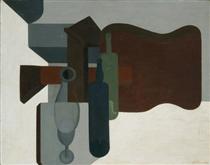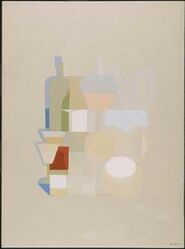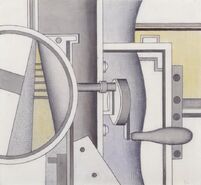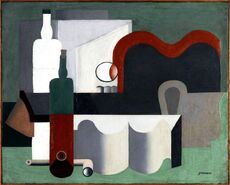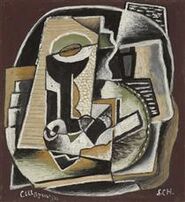| This page needs work. Please help us by expanding it. If you aren't sure how to help, check the article guide Format and Content |
Purism refers to an art movement that mainly took place between 1918 and 1925. Led by Amédée Ozenfant and Charles Edouard Jeanneret (Le Corbusier), Purism was born from criticism of the decorative Cubist movement. In purism, objects are represented as pure forms, devoid of detail.
Après le Cubisme[]
The essay Après le Cubisme (After Cubism) was written by Ozenfant and Le Corbusier and published in 1918. This essay demonstrated the main concepts behind Purism. Some of them are as follows:[1]
- Painting is as good as the internal qualities of its plastic elements are, but not their representative or narrative capabilities
- Purism strives to think clearly, create faithfully, precisely, squarely
- Serious art must expel all the techniques which are not true to the real value of the concept
- Art is primarily in the concept
- Technique is just a tool that humbly serves the concept
- Purism does not consider that a return to nature means copying nature
- It admits that any deformation is justified by the search for an invariant.
Artists[]
- Serge Charchoune
- Charles Edouard Jeanneret (Le Corbusier)
- Fernand Léger
- Amédée Ozenfant
- Nikos Engonopoulos
Gallery[]
External links[]
References[]
- ↑ Rita Lozinskaya (March 14, 2020). Order after chaos. Arthive. Retrieved June 18, 2023. Archived.


